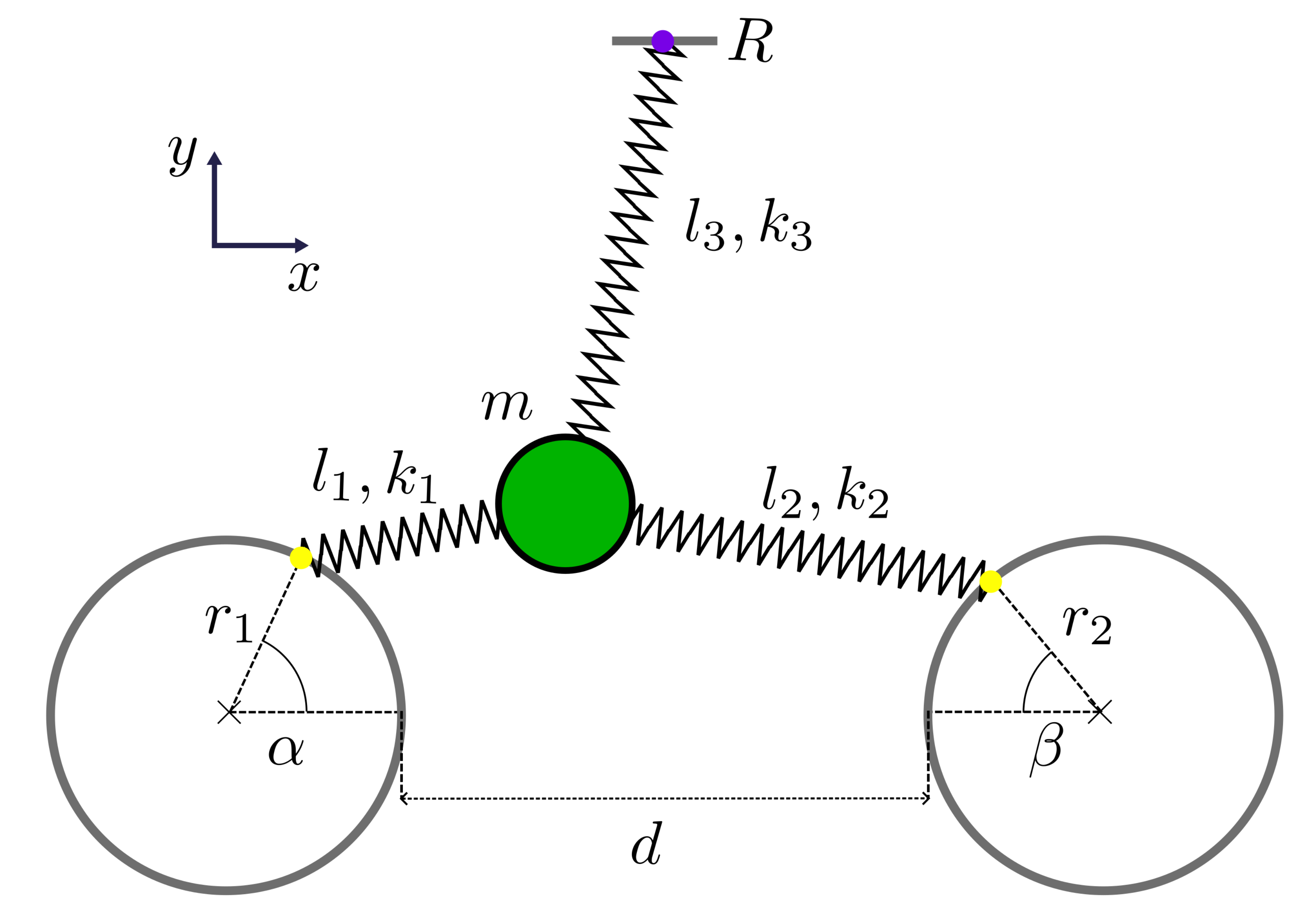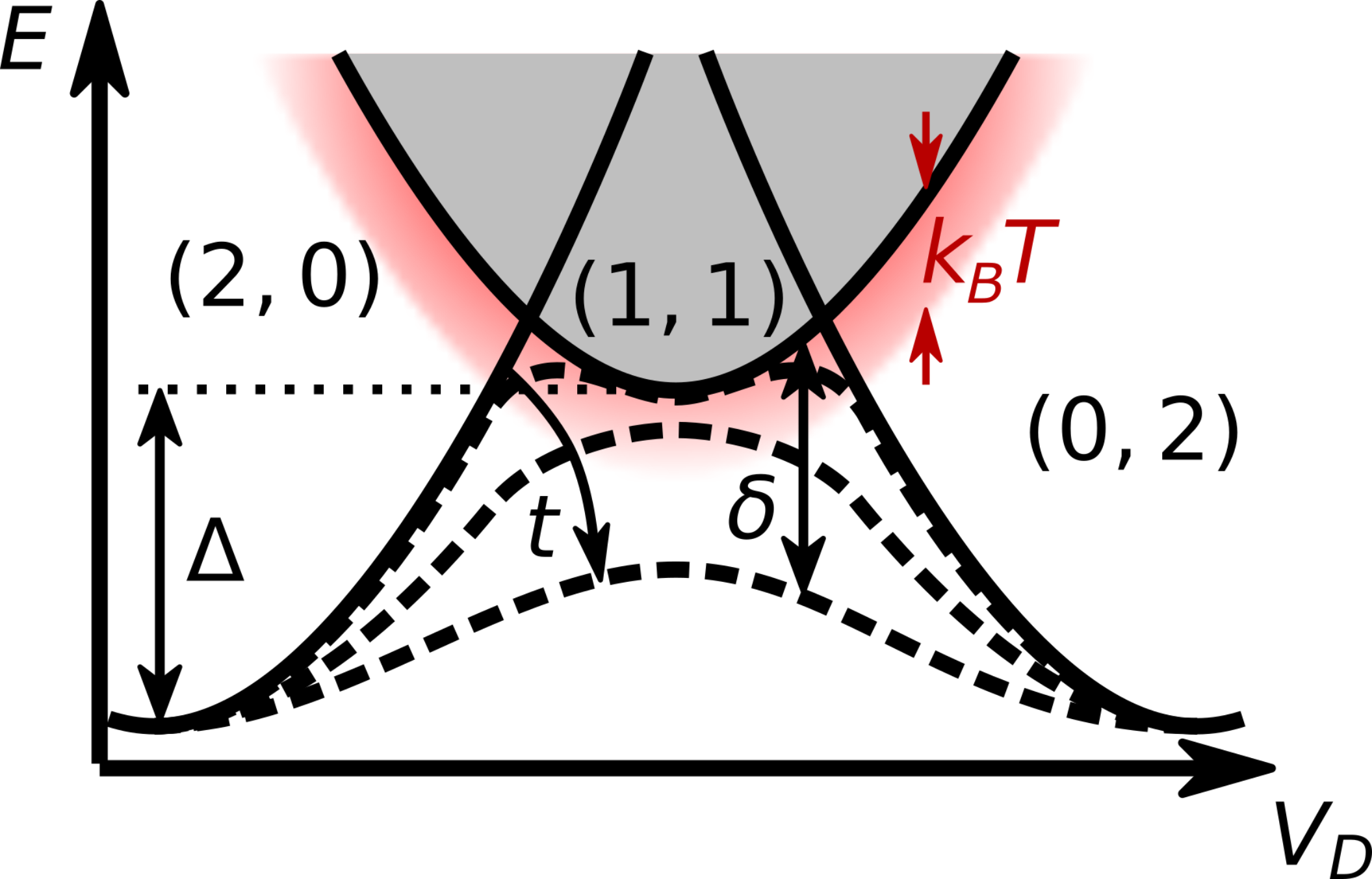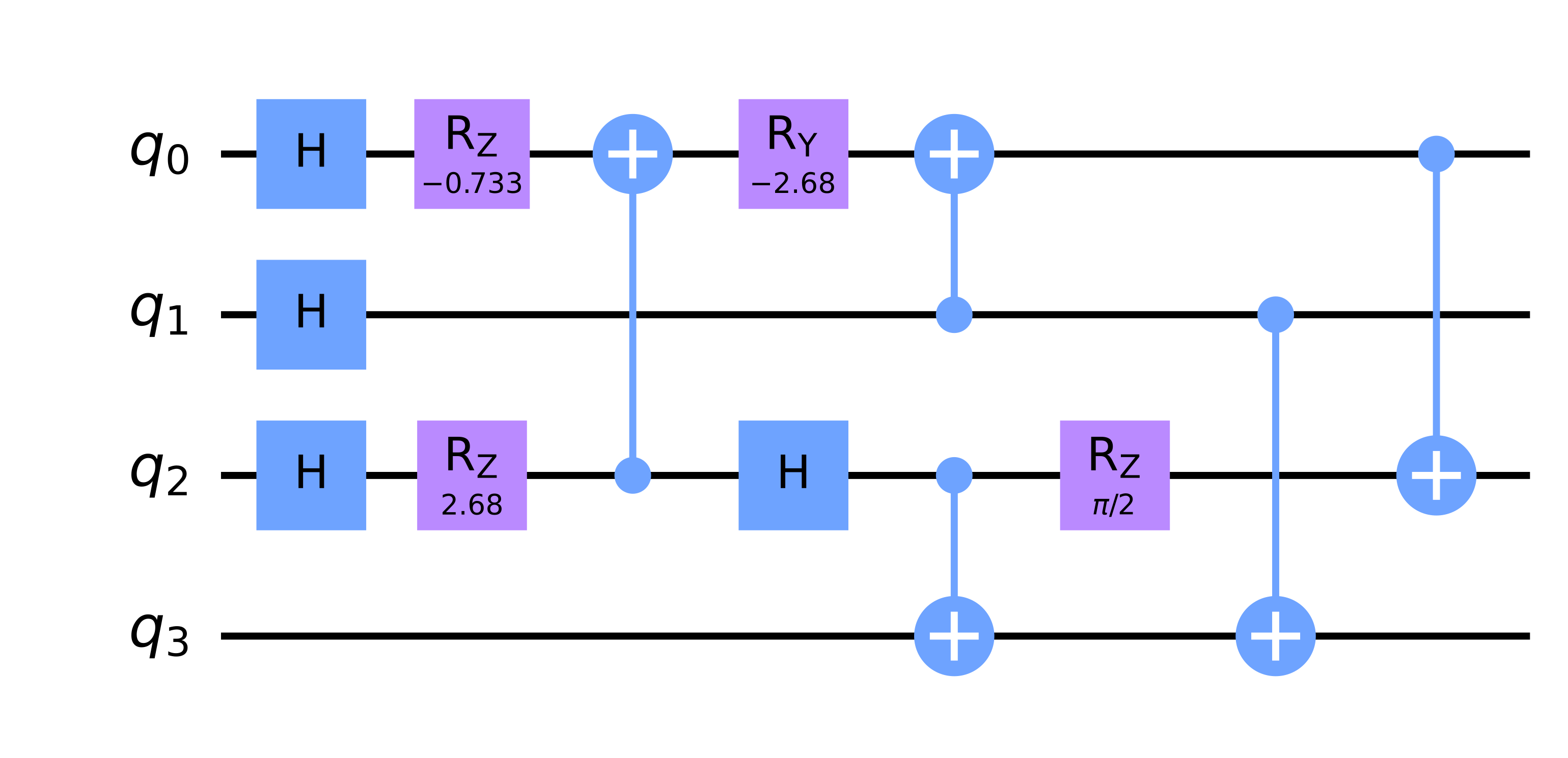publications
2023
-
 Weyl points in ball-and-spring mechanical systems2023
Weyl points in ball-and-spring mechanical systems2023Degeneracy points of parameter-dependent Hermitian matrices play a fundamental role in quantum physics, as illustrated by the concept of Berry phase in quantum dynamics, the Weyl semimetals in condensed-matter physics, and the robust ground-state degeneracies in topologically ordered quantum systems. Here, we construct simple ball-and-spring mechanical systems, whose eigenfrequency degeneracies mimic the behaviour of degeneracy points of electronic band structures. These classical-mechanical arrangements can be viewed as de-quantized versions of Weyl Josephson circuits, i.e., superconducting nanostructures proposed recently to mimic band structure effects of Weyl semimetals. In the mechanical setups we study, we identify degeneracy patterns beyond simple Weyl points, including the chirality flip effect and a quadratic degeneracy point. Our theoretical work is a step toward simple and illustrative table-top experiments exploring topological and differential geometrical aspects of physics.
doi = {10.48550/ARXIV.2302.08241}, author = {Guba, Zoltán and Frank, György and Pintér, Gergő and Pályi, András}, keywords = {Mesoscale and Nanoscale Physics (cond-mat.mes-hall), Classical Physics (physics.class-ph), FOS: Physical sciences, FOS: Physical sciences}, title = {Weyl points in ball-and-spring mechanical systems}, publisher = {arXiv}, year = {2023}, copyright = {arXiv.org perpetual, non-exclusive license}, }
2022
-
 Quantum capacitance of a superconducting subgap state in an electrostatically floating dot-islandFilip K. Malinowski, R. K. Rupesh, Luka Pavešić, Zoltán Guba, Damaz Jong, Lin Han, Christian G. Prosko, Michael Chan, Yu Liu, Peter Krogstrup, András Pályi, Rok Žitko, and Jonne V. Koski2022
Quantum capacitance of a superconducting subgap state in an electrostatically floating dot-islandFilip K. Malinowski, R. K. Rupesh, Luka Pavešić, Zoltán Guba, Damaz Jong, Lin Han, Christian G. Prosko, Michael Chan, Yu Liu, Peter Krogstrup, András Pályi, Rok Žitko, and Jonne V. Koski2022We study a hybrid device defined in an InAs nanowire with an epitaxial Al shell that consists of a quantum dot in contact with a superconducting island. The device is electrically floating, prohibiting transport measurements, but providing access to states that would otherwise be highly excited and unstable. Radio-frequency reflectometry with lumped-element resonators couples capacitatively to the quantum dot, and detects the presence of discrete subgap states. We perform a detailed study of the case with no island states, but with quantum-dot-induced subgap states controlled by the tunnel coupling. When the gap to the quasi-continuum of the excited states is small, the capacitance loading the resonator is strongly suppressed by thermal excitations, an effect we dub "thermal screening". The resonance frequency shift and changes in the quality factor at charge transitions can be accounted for using a single-level Anderson impurity model. The established measurement method, as well as the analysis and simulation framework, are applicable to more complex hybrid devices such as Andreev molecules or Kitaev chains.
doi = {10.48550/ARXIV.2210.01519}, author = {Malinowski, Filip K. and Rupesh, R. K. and Pavešić, Luka and Guba, Zoltán and de Jong, Damaz and Han, Lin and Prosko, Christian G. and Chan, Michael and Liu, Yu and Krogstrup, Peter and Pályi, András and Žitko, Rok and Koski, Jonne V.}, keywords = {Mesoscale and Nanoscale Physics (cond-mat.mes-hall), Superconductivity (cond-mat.supr-con), FOS: Physical sciences, FOS: Physical sciences}, title = {Quantum capacitance of a superconducting subgap state in an electrostatically floating dot-island}, publisher = {arXiv}, year = {2022}, copyright = {Creative Commons Attribution 4.0 International}, } -
 Resource analysis for quantum-aided Byzantine agreement with the four-qubit singlet stateZoltán Guba, István Finta, Ákos Budai, Lóránt Farkas, Zoltán Zimborás, and András Pályi2022
Resource analysis for quantum-aided Byzantine agreement with the four-qubit singlet stateZoltán Guba, István Finta, Ákos Budai, Lóránt Farkas, Zoltán Zimborás, and András Pályi2022In distributed computing, a Byzantine fault is a condition where a component behaves inconsistently, showing different symptoms to different components of the system. Consensus among the correct components can be reached by appropriately crafted communication protocols even in the presence of byzantine faults. Quantum-aided protocols built upon distributed entangled quantum states are worth considering, as they are more resilient than traditional ones. Based on earlier ideas, here we establish a parameter-dependent family of quantum-aided weak broadcast protocols. We compute upper bounds on the failure probability of the protocol, and define and illustrate a procedure that minimizes the quantum resource requirements. Following earlier work demonstrating the suitability of noisy intermediate scale quantum (NISQ) devices for the study of quantum networks, we experimentally create our resource quantum state on publicly available quantum computers. Our work highlights important engineering aspects of the future deployment of quantum communication protocols with multi-qubit entangled states.
doi = {10.48550/ARXIV.2207.04939}, author = {Guba, Zoltán and Finta, István and Budai, Ákos and Farkas, Lóránt and Zimborás, Zoltán and Pályi, András}, keywords = {Quantum Physics (quant-ph), FOS: Physical sciences, FOS: Physical sciences}, title = {Resource analysis for quantum-aided Byzantine agreement with the four-qubit singlet state}, publisher = {arXiv}, year = {2022}, copyright = {Creative Commons Attribution 4.0 International}, }